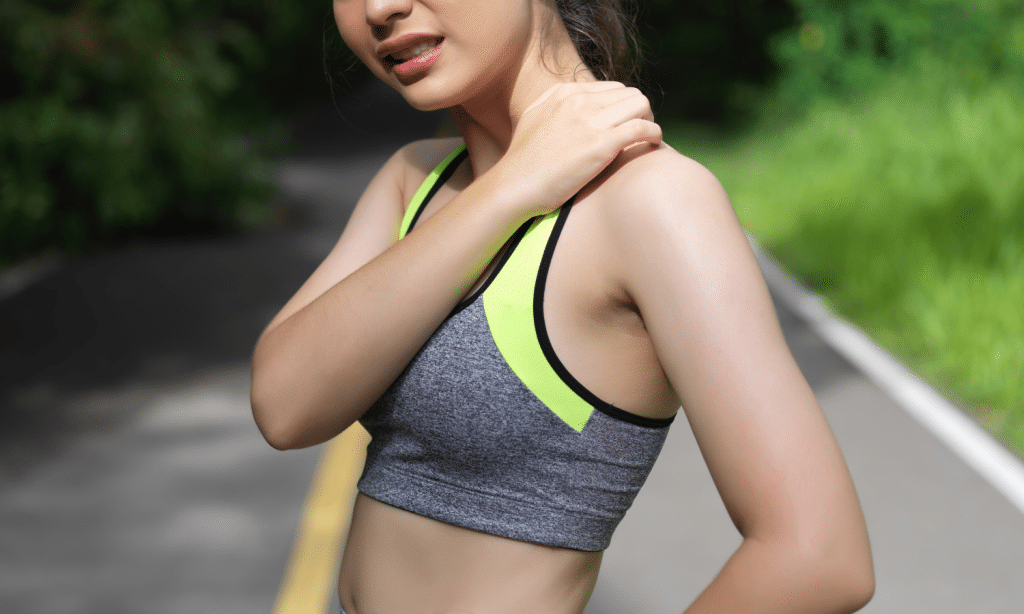[written by Loan Cao]

Have you ever felt an ache a day or two after a tough workout? Or maybe that immediate burn during a set of squats? Muscle soreness is a common side effect to exercise, but understanding the different types and how to manage them can help you stay consistent and injury-free.
There are two main types of muscle soreness: acute and delayed onset.
Acute muscle soreness happens during or immediately after exercise. It’s that burning sensation you feel when your muscles are working hard, caused by accumulation of metabolic byproducts, which clears relatively quickly. Acute soreness can also be associated with lack of adequate blood flow and is related to muscle fatigue rather than muscle repair. This type of soreness is temporary and usually disappears within a few hours.
Delayed Onset Muscle Soreness (DOMS), on the other hand, kicks in 24-72 hours after exercise. It’s characterized by muscle tenderness, stiffness, reduced range of motion, and sometimes even swelling. DOMS is thought to be caused by microscopic muscle damage and inflammation, resulting from unfamiliar or intense exercise. These microtears are normal. In fact, the body repair process not only heals the microtears but also results in stronger, healthier muscles.
Muscle soreness often means you’ve challenged your muscles enough to stimulate growth, which is generally positive, despite the discomfort. However, pain can sometimes signal an injury to muscles, tendons, or even joints. Consider seeking professional help if these symptoms occur:
● Muscle soreness lasts for more than a week
● Severe pain that prevents daily activities
● Signs of infection or significant injury
● Muscles are red, swollen, or warm to touch
● Pain in a surrounding joint, over the bone, or in a tendon
While some soreness is inevitable, there are ways to minimize its impact. Start with a proper warm-up to increase blood flow to your muscle. Gradually increase the intensity and duration of your workouts to avoid overloading your muscle too quickly. Stay hydrated and get enough sleep to support muscle recovery. After your workout, cool down with light stretching to improve flexibility and reduce muscle tension. Consider using active recovery techniques like light cardio or foam rolling to promote blood flow and reduce inflammation. Listen to your body and take rest days when needed to allow your muscles to recover fully.
One method of combating muscle or arthritic pain is through massaging. There are countless studies that go over the benefits of Therapeutic Massages, and we even offer them in the clinic!
August BOGO Mid-Summer Massage Special
For the month of August, we are offering a Buy One Get One Half Off your 75-minute massage session. When you purchase 2 massages this August, the second one is half off. The second massage can be used outside of this month, you just have to purchase 2 within August to be considered for the offer.
Check out our page going over the benefits of massage, HERE, and give us a call at 504-407-3477 to book your next massage!

